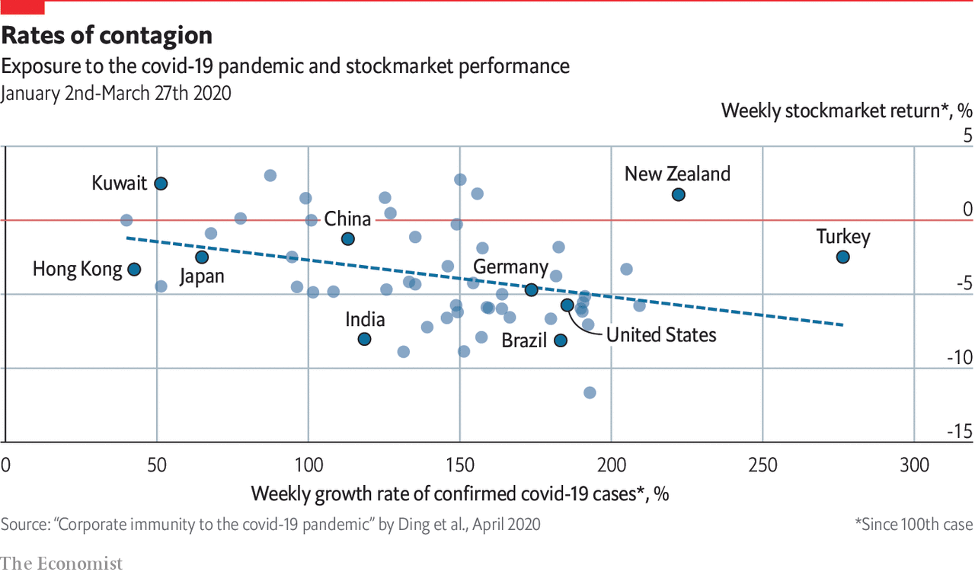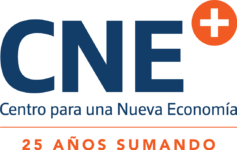
Published on May 1, 2020 / Leer en español
Five things you should know today
1) COVID-19’s effect on hunger in Puerto Rico
Analysis by Rosanna Torres, director of CNE’s office in Washington, D.C.
As the ramifications of the global pandemic continue to surface, attention is rapidly focusing on widespread hunger. In Puerto Rico, prior to recent layoffs and business closures, poverty levels surpassed those of any of the 50 states. Poverty has never been invisible on the island. But as we have reported through the years, we’ve collectively chosen to turn a blind eye.
Heartbreaking stories from this past week, serve as a reminder of the challenges faced by more than 1.3 million individuals in Puerto Rico who depend on food assistance in order to feed their families. Despite admirable attempts from food banks and community leaders to feed the poor, nothing can replace the role of the government in promoting the general welfare, as stipulated in our Constitution.
The U.S. government must also assume its responsibility. In contrast with states in the mainland that participate in the Supplemental Nutrition Assistance Program (SNAP), Puerto Rico is provided an annual block grant to run a much smaller Nutritional Assistance Program (NAP). The arbitrarily fixed amount allocated to Puerto Rico does not ensure the local government can adequately safeguard its most vulnerable population against nutritional insufficiency, especially when there are unexpected increases in needs.
Benefits in Puerto Rico are, in fact, very modest. To put this in context, here are some noteworthy (and disturbing) figures:
- Poverty rate in Puerto Rico: 43%
- Poverty rate for children under 5 years: 64%
- Average monthly NAP benefit for a family of three: $315
In the video below, Rosanna explains the limits of Puerto Rico’s Nutrition Assistance Program why greater funding is necessary to meet the needs of the population during the COVID-19 pandemic. This video is in Spanish.
In an effort to provide the necessary assistance, U.S. Senators Kamala Harris, Kirsten Gillibrand, and Bernie Sanders introduced a companion bill to a House bill that expands nutritional benefits in the U.S. Their bill increases baseline benefits by 30 percent, adjusts eligibility requirements, and allows the governments of Puerto Rico, American Samoa and the Northern Mariana Islands to request participation in SNAP. The bill also considers the cost of food in program benefits, an important provision as the cost of living increases.
As Congress deliberates a fourth relief package to mitigate the effects of the COVID-19 pandemic, it should consider increasing existing NAP benefits in Puerto Rico and provide for a careful transition to the SNAP program.
2) Polls: Three-quarters of Americans do not want to end social distancing policies (yet)
Two new polls by (1) NPR, PBS Newshour, and Marist College; and (2) Politico and Morning Consult, reveal that a vast majority of Americans are not comfortable with lifting social distancing orders and shelter in place restrictions. As reported in Vox, “Eighty percent of those responding to the NPR poll said they do not want schools, restaurants or large sporting events to start taking place again until there is more testing.” While “nearly two thirds (65 percent) said they do not want to go back to work without more thorough testing.”
Furthermore, the Politico/Morning Consult poll of 1,991 registered voters conducted between April 24 and 26 “showed that nearly three in four (73 percent) voters said the US should continue social distancing measures even if it further damages the economy…[and] just 15 percent of voters said social distancing measures should be lifted even if it means further spreading the virus.”
These results appear to counter the narrative put forth by the White House regarding the urgency ostensibly felt by many Americans to open the economy as soon as possible. They also show the American people really do consider the COVID-19 pandemic to be a serious threat.
3) One in three jobs held by women has been designated as essential
The COVID-19 pandemic has lifted the veil from many social trends that have been transpiring undercover for a long time. From unequal access to healthcare to food deserts to the lack of access to the internet, this crisis has opened the eyes of many who were either willfully oblivious or just unaware of already existing and growing social and economic inequalities.
So it should not be surprising that the New York Times reports women are disproportionately represented in many of the jobs deemed essential during the pandemic. According to the Times, “from the cashier to the emergency room nurse to the drugstore pharmacist to the home health aide taking the bus to check on her older client, the soldier on the front lines of the current national emergency is most likely a woman.” Unfortunately, “the work they do has often been underpaid and undervalued — an unseen labor force that keeps the country running and takes care of those most in need, whether or not there is a pandemic.”
In addition to being underpaid, women in the health professions have been put disproportionately at risk of infection during the pandemic, “while male doctors and nurses have died on the front lines, a recent report from the Centers for Disease Control and Prevention found that women account for 73 percent of the U.S. health care workers who have been infected since the outbreak began.”
The Times puts a human face on all these statistics with the story of Ms. Crystal Patterson. “Her stepfather was laid off from his airport job, and her parents are unsure what they will do. For Ms. Patterson, 30, a home health aide, there is less uncertainty. Yes, she has to manage caring for her son, but there is a client in her 90s who is depending on her.
So for around $10 an hour, she stays on the job. There is a fundamental question before her, one faced by countless other women keeping the country alive: If she does not do this, who will?”
It is only fitting and proper that Ms. Patterson gets the last word on this subject: “As a woman, this is nothing new to me,” Ms. Patterson said. “That’s how it’s always been in this country: ‘When we’re sick, get us through this.’”
4) A new model to track the spread of COVID-19
Researchers from Yale University, Hong Kong, and China, announced the development of “an approach for rapidly tracking population flows that could help policymakers worldwide more effectively assess risk of disease spread and allocate limited resources as they combat the COVID-19 pandemic.” The model they developed “shows that it is possible to very accurately forecast the timing, intensity, and geographic distribution of the COVID-19 outbreak based on population movement alone.”
The study, which was published by the journal Nature (but is still pending peer review), is based on “mobile-phone-data-based counts of 11,478,484 people egressing or transiting through the prefecture of Wuhan between 1 January and 24 January 2020.” The authors found that “the distribution of people leaving Wuhan accurately predicted the relative frequency of subsequent COVID-19 infections across China through Feb. 19, 2020…[and] developed a “risk source” model that leveraged population flow data to accurately forecast confirmed cases and identify places at risk of high transmission rates during the outbreak’s early stages.”
Furthermore, by accurately capturing population movements over time, the authors say they “can predict how a contagion will spread geographically and use data-analytic techniques to help control it before a devastating epidemic erupts or re-erupts.”
The application and adaptation of these big-data tools to epidemiological models hold great promise. However, the proper legal and regulatory safeguards need to be in place to avoid abuse by authoritarian regimes and otherwise “democratic” governments acting under the exigencies of a public health emergency.
5) Which companies are doing better during the pandemic?
A recently published paper by economists from the University of Hong Kong and the University of California at Berkeley, looked at 6,000 firms from 56 countries to analyze the relationship between corporate characteristics and stock price reactions to COVID-19 cases. The authors found that, perhaps as expected, “companies in countries with greater exposure to the pandemic, as measured by confirmed cases of Covid-19, suffered more than those in less-affected countries (see chart below).”

The researchers also found that a “pandemic-induced drop in stock prices was milder among firms with:
- stronger pre-2020 finances (more cash, less debt, and larger profits),
- less exposure to COVID-19 through global supply chains and customer locations,
- more CSR [corporate social responsibility] activities, and
- less entrenched executives.”
Finally, they observe that “the stock prices of firms with greater hedge fund ownership performed worse, and those of firms with larger non-financial corporate ownership performed better.”
Perhaps here lie the clues to a more resilient business model for large corporations in the post-pandemic world: more cash; lower debt levels; tighter supply chains; more spending on socially valuable activities; and diverse and widespread corporate ownership.
Quote of the Day
“We often overlook the worth and significance of those who are not in professional jobs, in the so-called big jobs, but let me say to you tonight, that whenever you are engaged in work that serves humanity, for the building of humanity, it has dignity and it has worth.”
—Martin Luther King, Jr.,
speaking to sanitation workers in Memphis, Tennessee,
March, 18, 1968
Weekend Reading Recommendations
Here are some reading recommendations from the CNE team:
- Every day, one chapter by a different writer – Escape Goat
- 5 Shakespeare Scholars on the Past, Present, and Future of Theater Amid COVID-19 — LitHub
- A Night on the Frontlines During a Pandemic — LitHub
- India: the millions of working poor exposed by pandemic – Financial Times
- Do We Really Want to Live Without the Post Office? — Esquire
- How Open-Source Medicine Could Prepare Us for the Next Pandemic – Fast Company
- What We Don’t Know About the Coronavirus – The New Yorker
- The Coming Greater Depression of the 2020s — Project Syndicate
- Why the Coronavirus Is So Confusing — The Atlantic
- Half of world’s workers ‘at immediate risk of losing livelihood due to coronavirus’ — The Guardian
This is the end of today’s briefing.
Stay safe and well informed!
